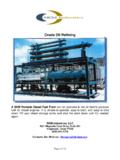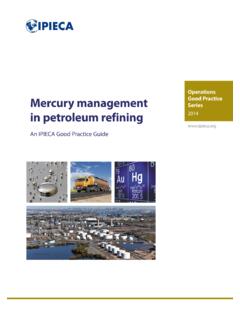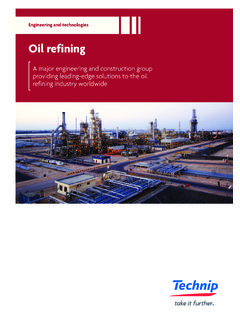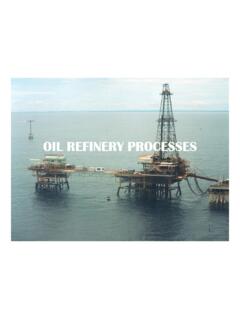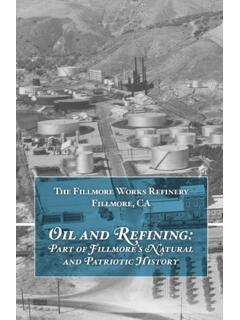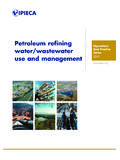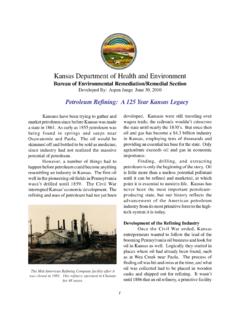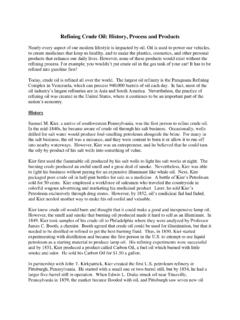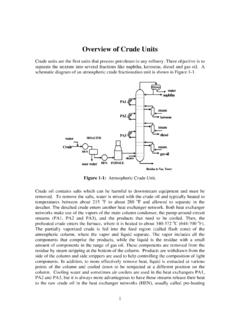Transcription of P04 Oil Ref KV Apr2014 GSOK - IEA-ETSAP
1 1 Please send comments to Kathleen Vaillancourt (Author), and to and Giancarlo Tosato Project Coordinators IEA ETSAP - Technology Brief P04 April 2014 - Oil Refineries HIGHLIGHTS PROCESS AND TECHNOLOGY STATUS In 2012, the global oil refining capacity has reached 93 million barrel per day (b/d): North America ( ), Latin America ( ), Europe & Eurasia ( ), Middle East ( ), Africa ( ), China ( ), India ( ), Japan ( ), Other Asia Pacific ( ).
2 A geographical shift in the refining capacity is reshaping the global downstream industry, namely with refinery closures in developed countries and capacity additions in developing regions [1]. China plans to reach 14 000 thousand b/d of refining capacity by 2015. In addition, there is an increasing need for more upgrading capacities in order to accommodate lower quality feedstock on one side, and meet the rising demand for low sulfur diesel on the other side [2]. Global capacity utilization average was in 2012 [3] while US average ranged to in the 2002-2012 period.
3 Configurations for refineries are multiple, but it is possible to distinguish general types of refineries based on their level of complexity: topping, hydro-skimming, conversion and deep conversion. Most of the refineries in the US, Asia, Middle East and South America are already conversion or deep conversion refineries (with upgrading units): this applies to more than 95% of total crude capacity and 100% of the crude capacity in large refineries (> 50 000 b/d) [6].
4 Most of the refineries in Europe and Japan are hydro-skimming and conversion refineries. To deal with lower quality input and improve the quality of the output, secondary processes play a vital role in processing raw crude into refined products [1]. They include upgrading units (to process heavy oil and oil sands); hydro-cracking or conversion units (to get lighter products); hydro-treating units (for desulphurization) and octane units including catalytic reforming, isomerization and alkylation processes.
5 PERFORMANCE AND COSTS The overall efficiency in US refineries was in 2008 (excluding upgrading units): for LPG/gasoline/distillate and for the remaining products (residual oil/naphtha, etc.) [4]. Energy use increases by 61 MJ/m3 of crude oil feedstock for each additional 1 kg/m3 of sulfur content and 44MJ/m3 for each additional 1kg/m3 in density [5]. Energy use per barrel has increased by 5% after 2006 for compliance with fuel quality standards [6]. The refining sector is a significant source of CO2 emissions: fossil fuel combustion counts for of the total emissions [7].
6 In the US, refineries generated approximately kg of CO2-eq per barrel of refined products in 2011. Use of heavy oil and oil sands can double or triple emissions ( t/m3) compared with the average ( t/m3) [5]. Possible configurations for refineries are multiple, and consequently their economics. New refineries are increasingly capital intensive due to more sophisticated engineering and equipment required to improve efficiency, higher quality fuel standards and environmental legislation.
7 However, on the long term, complex and flexible refineries can generate cost savings by taking advantages of the price differences between heavy and light crude oils and by producing more valuable light products [8]. A review of recent refinery projects provides ranges for investment costs: k$ per b/d for refining capacity expansion; k$ per b/d for refining capacity addition (but k$ per b/d for the world largest refinery, mb/d); k$ per b/d for upgrading capacity addition; k$ per b/d for refining capacity addition with upgraders and CCS.
8 As for total operation costs, they have fluctuated between - US$ (1999-2009) for the US refiners, including US$ for the energy costs [6]. Another source [23] suggests using the following average operating costs, excluding depreciation and amortization and energy costs: US$/barrel for US Gulf Coast & Midcontinent, US$/barrel for Northwest and Mediterranean Europe and US$/barrel for Asia. POTENTIAL AND BARRIERS The quality of transportation fuels has improved significantly during the past decades and refiners from developed regions (EU, USA, Canada, Japan) have completed the transition to ultra-low sulphur (ULS) fuels.
9 This trend is continuing in developing regions. After the evolution toward high quality refined products, a new trend is a switch in feedstock proportions, decreasing conventional oil use while increasing non-conventional oil and non-crudes such as biofuels, gas-to-liquids (GTL), coal-to-liquids (CTL) and natural gas liquids (NGL) [1]. Indeed, the rising price of crude oil is a strong incentive to produce transportation fuels from other (cheaper) commodities and to promote advanced refining technology development.
10 Most likely technology advances include alternative processes to the costly and energy-intensive hydro-cracking to produce incremental distillate from crude oil, as well as processes for converting gas and coal into distillates [1]. In addition, the higher availability of shale gas and the related low prices for the gas commodity increase the interest for the natural gas liquids (NGL) and naphtha streams. 2 Please send comments to Kathleen Vaillancourt (Author), and to and Giancarlo Tosato Project Coordinators IEA ETSAP - Technology Brief P04 April 2014 - PROCESS AND TECHNOLOGY STATUS Oil refineries are part of the oil downstream sector and convert crude oil and other feedstock into various refined petroleum products, including transportation fuels.
